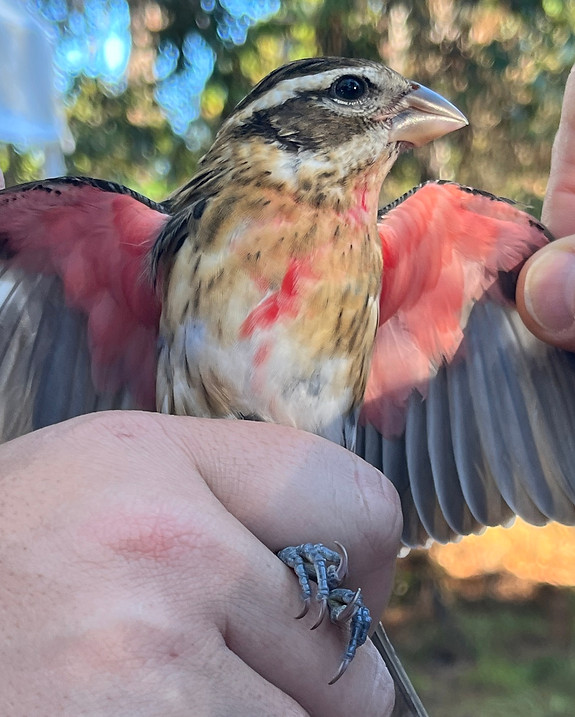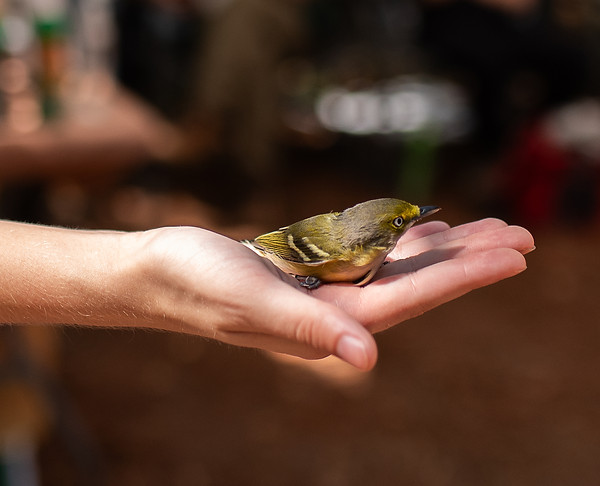Bird Banding
its uses, how we band, and why it’s important
Its History
Banding is a technique employed by avian researchers and conservationists to monitor and better understand the life cycles of birds. In North America, bird banding research has been on-going for 100 years. In the U.S., the regulatory office that manages banding is the Bird Banding Lab in Laurel, Maryland. The BBL ensures banding is done with the bird's safety as first priority and to ensure banding is helping to answer research and conservation questions. They also store the billions of banding banding records and data which researchers can request.


The Process
Each bird receives an aluminum “anklet” with a unique alpha-numeric sequence (usually 9 digits) that is used to identify individuals; like a social security number. The image to the left shows the smallest size band for a hummingbird in comparison to a band for an owl. Banding is a "capture-recapture process" this means the bird is quickly banded, measured, and then released in hopes that we will re-encounter that bird or another bander will.
Goals of Banding
“Resighting” or “Recapturing” banded birds gives researchers an idea of its geographic movements, productivity, survival, migration movements, location of critical habitat for declining species, and much more. As BCA, we also use banding as an important outreach tool to communicate why we band and why conservation is important.


"How" do we band?
People are usually curious how we catch the birds we band. Most commonly, we use "mist nets" which are made of a fine mesh material that are spread out in the habitat on 10ft conduit poles. Usually, the birds will not see the nets while they fly through the habitats which is how we catch them. These nets are monitored and checked every 15 to 30 minutes by trained banders. The birds are then brought back to the banding table/area to be banded and then are released back to the wild.
Its Value
Banding data allow researchers to answer important questions, such as what factors may be limiting population growth or causing declines; information critical to making informed conservation decisions. For more information on banding, please visit the BBL website: Why Do We Band Birds



